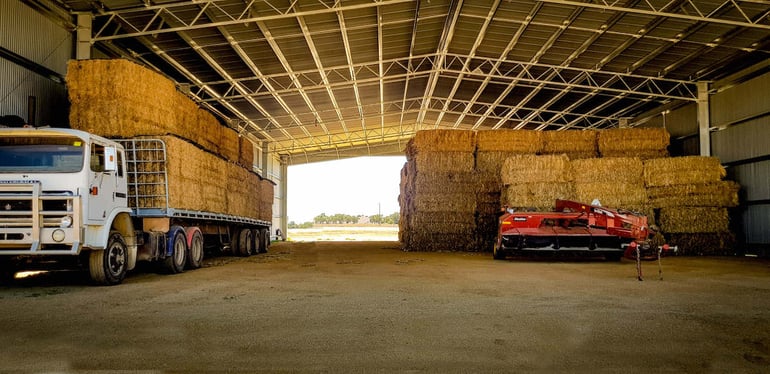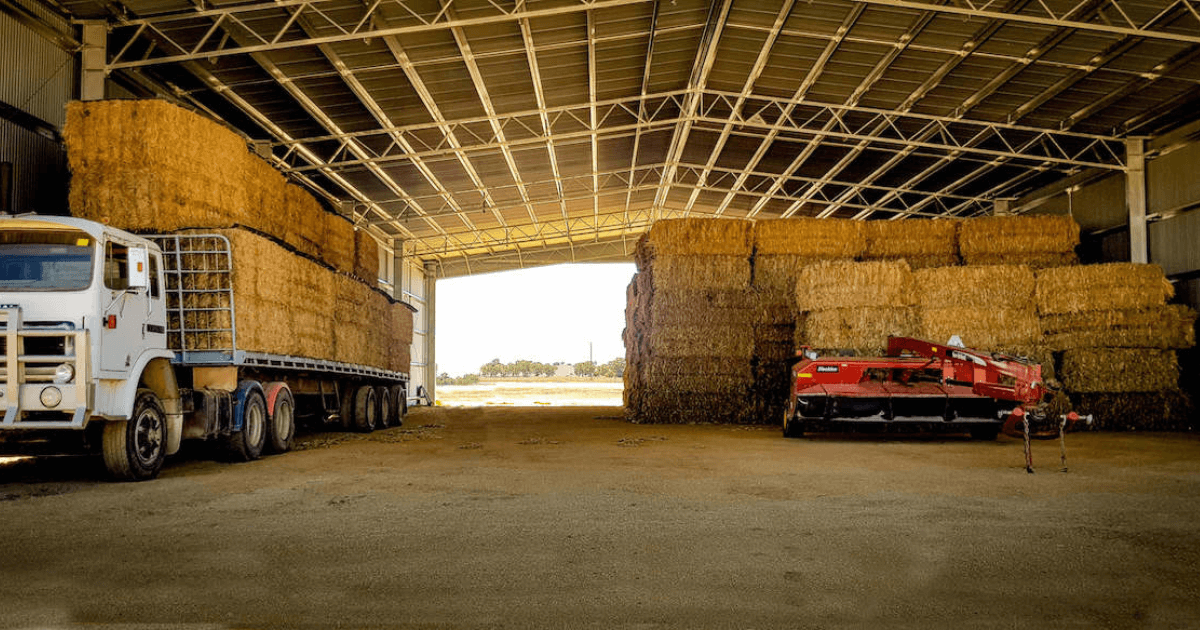How to get a tax advantage for hay storage

Getting a fodder storage or hay shed constructed on your farm is a smart move that will reduce fodder storage losses, however, an investment like this isn’t cheap. The more hay you harvest the bigger the shed you will need, therefore increasing upfront costs. This can be a big deterrent for farmers to organise new and much-needed hay storage if they’re already battling with the effects of drought, fire and COVID-19.
The Australian Government is looking to help and now has measures in place that make it easier for farmers to get important assets, like quality hay sheds, for their farm or business. One of the incentives they have put in place is the instant asset write-off.
Find out how you can make this tax incentive work to your advantage and see returns on your investment more quickly, thanks to the Governments' instant asset write-off program.
What tax assistance is on offer?
Generally, when we purchase large assets like farm machinery and equipment, we don’t deduct their costs from our income all at once. Instead, the asset depreciates over a period of time, and that’s the amount that gets deducted from your tax bill. So far, so good, but it can make investing in new assets more difficult. For many farmers, buying a hay shed strains the back pocket, especially if they are also unable to claim a tax deduction for capital expenditure.
However, the Government has decided to incentivise farmers and businesses alike that may have been struggling from the effects of things like major droughts, and COVID-19. A key tax break that the Government has brought in as a result of COVID-19 is to increase the instant asset write-off which allows businesses to acquire new or second-hand assets, and claim an immediate tax deduction. As a part of the 2021-22 budget, the Government has extended the instant asset write-off aptly named ‘Temporary Full Expensing’, which allows businesses to deduct the full cost of eligible depreciable assets.
How the instant asset write-off works
The criteria for the instant asset write-off has changed multiple times from its inception however, there are some basic rules and criteria that businesses will need to adhere to, in order to claim a tax deduction.
Eligible businesses can claim an immediate deduction on the business portion of an asset, in the year it is first used or installed. For assets first used or installed ready for use between 12 March 2020 and 30 June 2021, and purchased by 31 December 2020, the instant asset write-off criteria are:
- The threshold amount for each asset is $150,000 (up from $30,000).
- The eligibility for the instant asset write-off is for businesses with an aggregated turnover of less than $500 million (up from $50 million).
However, as a part of the 2021-22 budget, the Australian Government has decided to extend the instant asset write-off to allow businesses to claim an immediate deduction on the full cost of eligible depreciable assets purchased new or second-hand (temporary full expensing).
From 7.30 pm AEDT on 6 October 2020 until 30 June 2022, temporary full expensing allows a deduction for:
- The business portion of the cost of new eligible depreciating assets for businesses with an aggregated turnover under $5 billion.
- The business portion of the cost of eligible second-hand assets for businesses with an aggregated turnover under $50 million.
- The balance of a small business pool at the end of each income year in this period for businesses with an aggregated turnover of under $10 million.
Eligibility for the instant asset write-off depends on your specific situation which can include:
- Your aggregated turnover – this is the total income of your business and the income of any associated businesses.
- The date you purchased the asset.
- When the asset was first used or installed ready for use.
- The cost of the asset is less than the threshold.
It’s important to note that if temporary full expensing is applied to the asset, then you will not need to apply the instant asset write-off. For further information please head to the Australian Taxation Office information page.
This information is a guide on the instant asset write-off rules and shouldn’t be used as financial advice. For help with your specific situation, we would recommend getting guidance from a qualified professional or your accountant so you can understand just how much tax you could claim, as part of the instant asset write-off.
Help for primary producers affected by drought
Along with the instant asset write-off, it’s important to note that there is also more assistance available for farmers that may have been directly affected by drought. If drought is causing financial difficulties for you or your business and preventing you from purchasing something important as a hay shed, there is further help available. This help includes:
- Immediate tax deductions for capital expenditure on water facilities, fencing and fodder storage, and landcare operations that will help you prepare for, and manage, drought.
For more information on the help available for farmers and primary producers, just visit the Australian Taxation Office information page.
The impact of a hay shed on your bottom line
Apart from the direct tax advantages brought about by incentives like the instant asset write-off, there are also indirect advantages that will ultimately impact on your income and profitability. Good fodder isn't cheap to buy or produce and by ensuring that spoilage is kept to a minimum, you’re able to make that expense work a lot harder for you, boosting production and profitability at no further cost once your storage shed has been erected. A quality hay storage shed will ensure that your fodder is protected from the elements, all-year-round.
For more information on our structural steel hay sheds just click here. Interested in seeing some of the hay sheds we’ve constructed previously? Just download our free farm sheds brochure.
-1.png?width=3641&height=660&name=abcshedstransparent2%20(1)-1.png)




